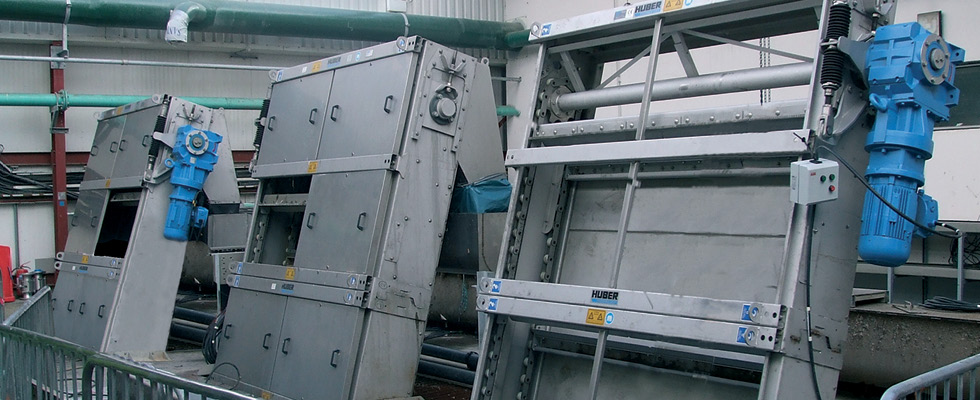
Operators of wastewater treatment plants (WWTP) nationwide are faced with an ever-growing volume of debris in municipal influent. From “flushable” wipes and rags, plastic bottles, cigarette butts and disposable vape cartridges to large objects like scrap wood and even animal carcasses, the tide of trash is rising. If this debris gets past the headworks—the facilities where wastewater enters a wastewater treatment plant—it can clog pumps and other vital downstream plant equipment, creating a major maintenance headache, costly unplanned downtime and premature equipment failure.
To mitigate this risk, effective influent screening at the headworks is critically important. To meet the challenge, many WWTPs are looking to upgrade their bar screens in an effort to increase debris removal effectiveness while maintaining current or increasing influent flow levels. In older plants, this often means replacing aging bar screens with modern, automated rake systems. These draw debris up and out of the headworks channel, depositing it in a bin or dumpster for disposal. In many cases, a screenings washing and press is used prior to the dumpster in order to reduce the waste tonnage.
Upgrading an existing bar screen can present a number of challenges for plant operators. To ensure a successful bar screen installation, WWTP operators should consider the following key questions well in advance of their upgrade project.
Will the New Unit Fit?
In some cases, bar screen systems installed within plant buildings were put in place before the walls were constructed. Yet, the structure may not have been designed with replacement of large equipment in mind. If the doors are not large enough to facilitate system replacement, cutting a larger opening in a concrete wall may not be feasible. In these cases, the old unit often must be removed in pieces. How can the new system be installed?
In these cases, specifying an automated bar screen system with a modular design is a practical choice. Separating the system into its constituent modules enables installers to bring each piece into the structure separately, eliminating costly headaches and delays.

HUBER Technology)
How Can Service Interruption Be Avoided?
Wastewater flow does not stop just because a new bar screen is being installed. Larger WWTPs will often have multiple influent channels at their headworks, allowing screen systems to be installed in a phased manner as flow is diverted to other channels. However, smaller plants rated for, say, 5 million gallons per day (gpd) with just a single channel do not have that option.
One solution is to use a prebuilt, self-standing, stainless-steel headworks with integrated screening and even grit removal to handle the flow. This system can be designed and prefabricated for simple and quick installation at the site. A prebuilt, self-standing headworks can provide an effective, permanent solution for handling increased influent flows, eliminating the costly and time-consuming process of constructing a new concrete channel to replace or augment the existing channel.
Is the System Built to Last?
An automated rake screen system represents a significant investment for a WWTP and the taxpayers who fund it. It should be designed and built to provide reliable service under harsh conditions for decades. Contaminants in the influent create a corrosive environment that deteriorates equipment that is not properly designed and constructed. The screen system should be constructed of high-grade stainless steel to minimize the chance of corrosion. Quality manufacturers use special “immersion pickling” treatments to provide an even higher level of corrosion resistance.
The rake system should be rugged enough to handle even large, heavy debris, with hardened steel drive components. Overload protection should be present to protect the electric motor and other sensitive components in the rare event of a blockage.
Is It Easy to Maintain?
All WWTP equipment requires periodic maintenance to ensure a long, reliable service life. Upgrading to a rake screen system that simplifies maintenance can reduce the burden on busy plant operations staff. Access to the screens should be easy, allowing regular inspection. If the unit is encased, covers should be simple and quick to remove. Motors and other electrical components should also be easy to access, simplifying inspection and replacement, if necessary.
Is the Process Led by a Team?
As with any major plant upgrade, there are multiple parties involved: engineers, who design the plan; the contractor, who installs the equipment; and the equipment manufacturer. It is critical that all these parties work as a team right from the initial project planning stage.
This approach effectively multiplies the team members’ combined expertise, enhancing their ability to spot potential issues early in the process. Working as a team, the parties can then develop an effective solution long before the install date, avoiding costly delays and unproductive finger-pointing.
The Value of a Strategic Approach
Despite public education efforts aimed at raising awareness of the problem of debris in the waste stream, the challenge of influent trash is likely to continue and even grow. Deploying sophisticated, automated bar screens is now a “must have” at WWTPs, regardless of their rated capacity. Taking a strategic approach to the planning, acquisition and installation of a screening system can increase the odds of meeting the challenge while minimizing the impact on plant operations and on taxpayers.

